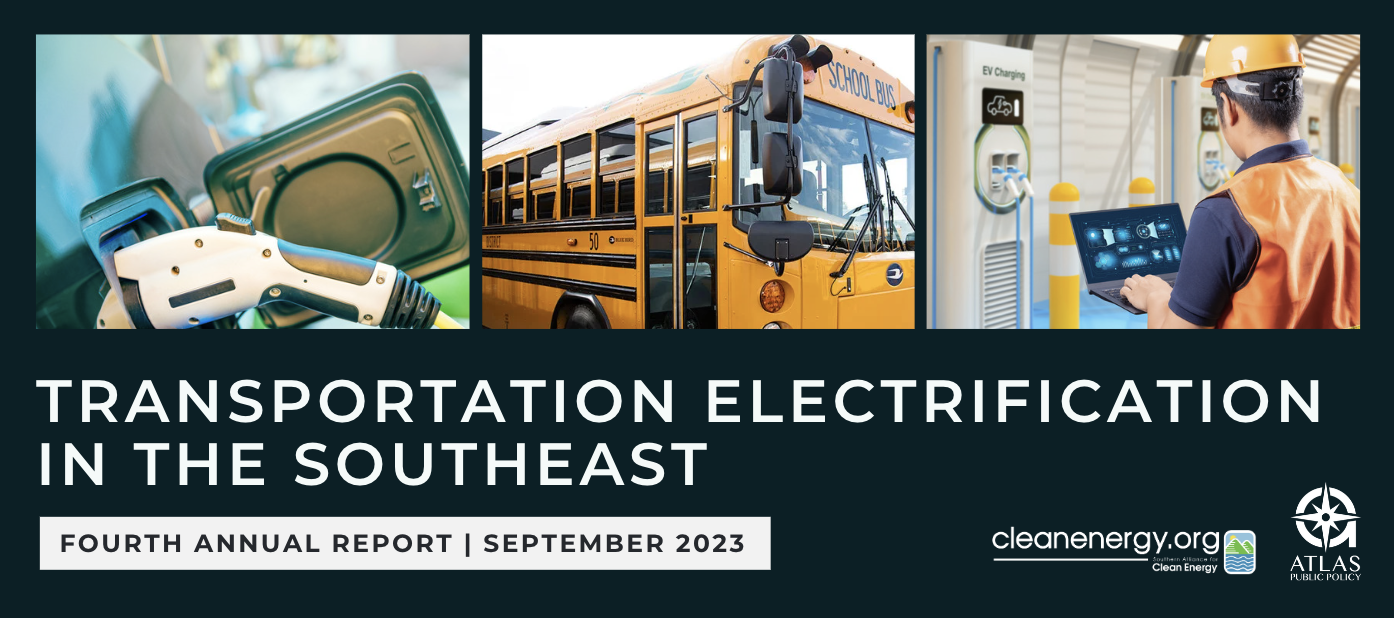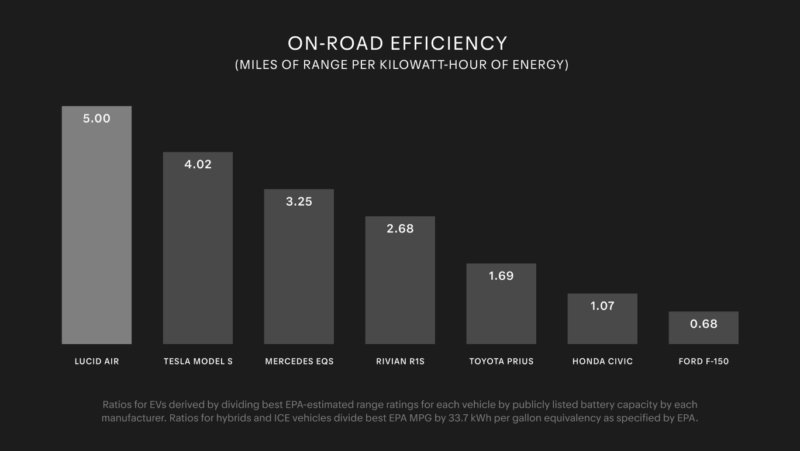
The fourth annual “Transportation Electrification in the Southeast” report, published by Atlas Public Policy in collaboration with the Southern Alliance for Clean Energy, benchmarks progress on transportation electrification from July 2022 through June 2023 in six states across the Southeast: Alabama, Florida, Georgia, North Carolina, South Carolina, and Tennessee.
While the Southeast lags behind national averages in EV sales, charging station deployment, utility investment, and public funding, the region is a national leader in capturing EV-related investments and jobs, with 40% of manufacturing investments and 35% of all announced manufacturing jobs to date.
On Wednesday, September 6, report authors and contributors from Atlas Public Policy and SACE hosted a webinar focusing on report highlights, including:
- Over the past 12 months, 5.9% of all new light-duty vehicles sold were EVs, with three states topping the 7% market share threshold in the second quarter
- More than 60,000 of the nation’s announced EV manufacturing jobs will go to the Southeast, with Georgia in the lead
- EV-related manufacturing investments increased 93% over the past 12 months
- The Southeast saw a 60% increase in charging deployment in the past 12 months, with Georgia in the per capita lead
- Southeast utilities lag the national investment per capita in transportation electrification, with Florida Power & Light investing the most per customer
- Though states have allocated very few new state funds to transportation electrification, they have greatly increased access to available federal and VW Settlement funds, with North Carolina leading the pack per capita.
READ THE SEPTEMBER 2023 REPORT BLOG
By Kate Tracy. Courtesy of Southern Alliance for Clean Energy.
I don’t like paywalls. You don’t like paywalls. Who likes paywalls? Here at CleanTechnica, we implemented a limited paywall for a while, but it always felt wrong — and it was always tough to decide what we should put behind there. In theory, your most exclusive and best content goes behind a paywall. But then fewer people read it! We just don’t like paywalls, and so we’ve decided to ditch ours. Unfortunately, the media business is still a tough, cut-throat business with tiny margins. It’s a never-ending Olympic challenge to stay above water or even perhaps — gasp — grow. So …





